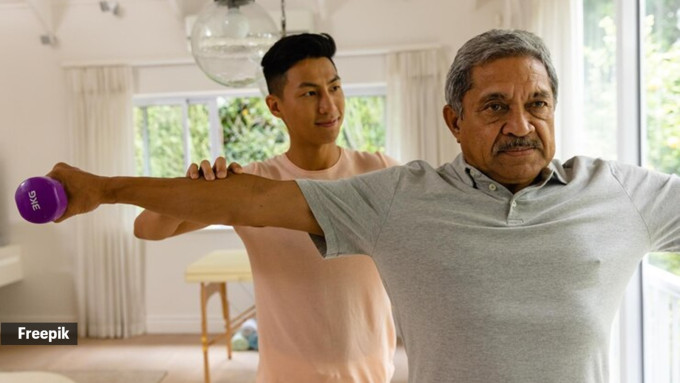Anil Kapoor posts an image of his chiselled body: How to keep up with fitness goals in your 60s and beyond
When it comes to defying age and staying fit, veteran actor Anil Kapoor continues to set the bar high.
Recently, the 67-year-old actor shared a picture of his impressive physique that caught the attention of Producer Rory Millikin, who playfully compared his shredded look to that of fitness icon Arnold Schwarzenegger.

He commented, “I don’t know who’s more shredded, you or Arnold in the foreground..Looking good brutha!” In response, Kapoor wrote, “Thank you mate. At present, Jeremy Renner is the most shredded mate.”
View this post on Instagram
A post shared by anilskapoor (@anilskapoor)
Millikin worked with Kapoor in ‘Rennervations’, a docu-series hosted by Jeremy Renner.
While Kapoor’s dedication is admirable, it’s not just about looking like a movie star. Staying active and healthy in our later years is crucial for overall well-being and quality of life.
Most important factors when creating a fitness routine for individuals in their 60s and beyond
Kate Austin, head coach at MultiFit, says, “For people who are in their 60s and beyond, creating a fitness programme needs to take into account a number of important aspects in order to guarantee sustainability, efficacy, and safety. First of all, it’s important to be aware of one’s unique health circumstances and any physical restrictions. The practice can be modified to meet the needs of those with arthritis, osteoporosis, or cardiovascular problems by speaking with a healthcare provider or a certified fitness specialist.”
She adds that it is imperative to prioritise daily workouts. “It promotes independence in daily tasks, lowers the risk of falls, and helps maintain total functional fitness. Exercises that combine resistance and aerobic training with yoga or tai chi can improve flexibility and balance while also encouraging stress relief and relaxation.”
In order to avoid injuries and lessen muscle stiffness, it’s also critical to incorporate sufficient warm-ups and cool-downs. Exercises that increase gradually in length and intensity allow for adaptation without becoming too strenuous, which encourages long-term commitment to the programme.
Finally, Austin suggests making sure that workouts are varied to not only keep things interesting, but also target various muscle groups and fitness levels, which “enhances motivation and general well-being.”
 In order to maintain bone density, increase metabolism, and keep muscle mass, older persons must engage in strength training (Source: Freepik)
In order to maintain bone density, increase metabolism, and keep muscle mass, older persons must engage in strength training (Source: Freepik)
Safely incorporate strength training into your fitness regimen
In order to maintain bone density, increase metabolism, and keep muscle mass, older persons must engage in strength training, stresses Austin. “Since safety is the top priority, it is crucial to start with little weights or resistance bands and concentrate on utilising the right form and technique. Before moving on to using equipment, it can be beneficial to start with bodyweight exercises like wall push-ups, lunges, and squats to develop basic strength.”
It is recommended to include strength training exercises that focus on the main muscular groups in the body, such as the arms, legs, back, chest, and core. Reducing the chance of damage can be achieved by controlling breathing during activity. As strength increases, progressively raising the resistance or weight guarantees ongoing progress. Furthermore, allow time for rest and recovery between workouts.
Nutrition and diet
Due to its ability to supply vital nutrients for energy, muscle preservation, and general health, nutrition is critical in helping people in their 60s and older achieve their exercise goals. Consuming meals high in vitamins, minerals, and antioxidants and high in nutrient density becomes more crucial when metabolism naturally slows down with age.
Austin says, “Overall health and fitness are supported by a balanced diet that consists of a range of fruits, vegetables, lean proteins, whole grains, and healthy fats.” Sufficient consumption of protein is especially important for the preservation and regeneration of muscles; daily recommendations for protein intake typically range from 1.0 to 1.2 grams per kilogramme of body weight.
📣 For more lifestyle news, click here to join our WhatsApp Channel and also follow us on Instagram
Disclaimer: The copyright of this article belongs to the original author. Reposting this article is solely for the purpose of information dissemination and does not constitute any investment advice. If there is any infringement, please contact us immediately. We will make corrections or deletions as necessary. Thank you.
